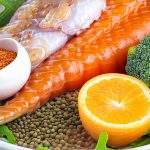Bladder pressure – that uncomfortable sensation of fullness, urgency, or even pain – can significantly impact daily life. It’s often linked to various factors including dehydration, urinary tract infections, pelvic floor dysfunction, and even dietary choices. While many solutions focus on medication or physical therapy, a surprisingly effective approach lies in incorporating more natural fiber into your diet. Fiber isn’t just about digestive health; it plays a crucial role in overall well-being, influencing everything from blood sugar regulation to hormonal balance, and importantly for our discussion today, bladder function. Understanding how different fiber sources can contribute to reduced bladder pressure is empowering, allowing individuals to take proactive steps towards improving their comfort and quality of life.
This article will explore the connection between natural fiber intake and bladder health, focusing on specific food sources and how they work to alleviate pressure. We’ll move beyond generalized advice about “eating more fiber” to delve into nuanced options that are particularly beneficial for those experiencing these uncomfortable symptoms. It’s important to note that managing bladder pressure often requires a holistic approach, but dietary adjustments – specifically increasing soluble and prebiotic fibers – can be a powerful component of that strategy. This is not intended as medical advice; always consult with your healthcare provider to determine the best course of action for your individual needs.
The Role of Fiber in Bladder Health
Fiber’s impact on bladder health isn’t immediately obvious, but it stems from its influence on the entire digestive system and subsequent effects on pelvic floor function. Constipation is a common contributor to bladder pressure; when the bowel is full and impacted, it can press against the bladder, reducing capacity and increasing urgency. Soluble fiber, found in foods like oats, apples, and beans, absorbs water, creating softer stools that are easier to pass, thus alleviating this pressure. Furthermore, improved regularity minimizes straining during bowel movements, which weakens pelvic floor muscles over time. A healthy digestive system also reduces inflammation throughout the body – chronic inflammation can exacerbate bladder sensitivity and contribute to urgency.
Beyond simply preventing constipation, specific types of fiber promote a healthy gut microbiome. This community of bacteria in our intestines plays a vital role in immune function and overall health. An imbalanced gut microbiome (dysbiosis) has been linked to increased bladder irritation and urinary frequency. Fiber acts as food for these beneficial bacteria, encouraging their growth and diversity. This can lead to reduced inflammation and improved regulation of the nervous system pathways that control bladder function. The connection between gut health and bladder health is increasingly recognized in research, making fiber a compelling dietary intervention. For those looking to further support their gut health, exploring natural probiotic sources can be highly beneficial.
Finally, it’s crucial to understand the difference between soluble and insoluble fiber. While insoluble fiber adds bulk to stool (important for preventing constipation), it doesn’t have the same water-absorbing or prebiotic properties as soluble fiber. For bladder health specifically, prioritizing foods rich in soluble fiber is generally more beneficial. A balanced intake of both types remains important for overall digestive health, but focusing on soluble sources can directly address bladder pressure concerns.
Fiber-Rich Foods to Incorporate
Here are some specific food groups and examples within them that offer substantial benefits:
- Oats: Oatmeal (especially steel-cut oats) is a fantastic source of soluble fiber. Start your day with a bowl to experience its soothing effects on the digestive system and potentially reduce bladder pressure. Adding berries or other fruit further enhances the nutritional value and fiber content.
- Apples & Pears: These fruits are rich in pectin, another type of soluble fiber. Eating them with the skin maximizes the fiber intake. Consider snacking on sliced apples with a tablespoon of nut butter for added protein and healthy fats.
- Legumes (Beans, Lentils): Lentils, kidney beans, black beans – all offer significant amounts of both soluble and insoluble fiber. They can be incorporated into soups, stews, salads, or used as a side dish. Be mindful that introducing legumes too quickly can cause gas; start with small portions and gradually increase intake.
To optimize digestive flow alongside increased fiber intake, consider exploring strategies for smooth digestive flow.
Increasing Fiber Intake Gradually
A sudden dramatic increase in fiber consumption can actually worsen symptoms like bloating and discomfort, potentially exacerbating bladder pressure. The key is to introduce fiber gradually over several weeks, allowing your digestive system time to adjust. Here’s a suggested approach:
- Start Small: Begin by adding one serving of a high-fiber food to your diet each day (e.g., half a cup of oatmeal).
- Increase Water Intake: Fiber absorbs water, so it’s crucial to drink plenty of fluids throughout the day – at least 8 glasses – to prevent constipation.
- Monitor Your Body: Pay attention to how your body responds. If you experience bloating or discomfort, reduce the amount of fiber and gradually increase it again as tolerated.
- Variety is Key: Don’t rely on just one source of fiber. Incorporate a variety of fruits, vegetables, legumes, and whole grains into your diet for optimal health benefits.
Managing potential bloating is also key; learning about how to manage bloating can greatly improve comfort during this process.
Addressing Potential Side Effects
While generally beneficial, increasing fiber intake can sometimes lead to uncomfortable side effects. Bloating and gas are common initial responses as the gut microbiome adjusts. Here’s how to mitigate these issues:
- Probiotic Supplementation: Consider taking a probiotic supplement alongside increased fiber intake. Probiotics help support the growth of beneficial bacteria in the gut, aiding digestion and reducing bloating. Always consult with your healthcare provider before starting any new supplements.
- Chew Thoroughly: Proper chewing breaks down food more efficiently, making it easier for the digestive system to process.
- Hydration is Paramount: We’ve stressed this already, but it bears repeating: adequate hydration is essential when increasing fiber intake. Dehydration can worsen constipation and bloating.
It’s important to remember that dietary changes are just one piece of the puzzle when managing bladder pressure. Consulting with a healthcare professional is crucial for identifying underlying causes and developing a comprehensive treatment plan tailored to your individual needs. However, embracing natural fiber sources can be a powerful step towards improved comfort and overall well-being. Furthermore, understanding how to naturally regulate stool can provide additional relief.
For those seeking further guidance on holistic bladder health strategies, exploring resources on mindful eating for reduced discomfort could prove valuable. And don’t underestimate the power of cooking grains for maximum bladder comfort – small changes can make a big difference.





















